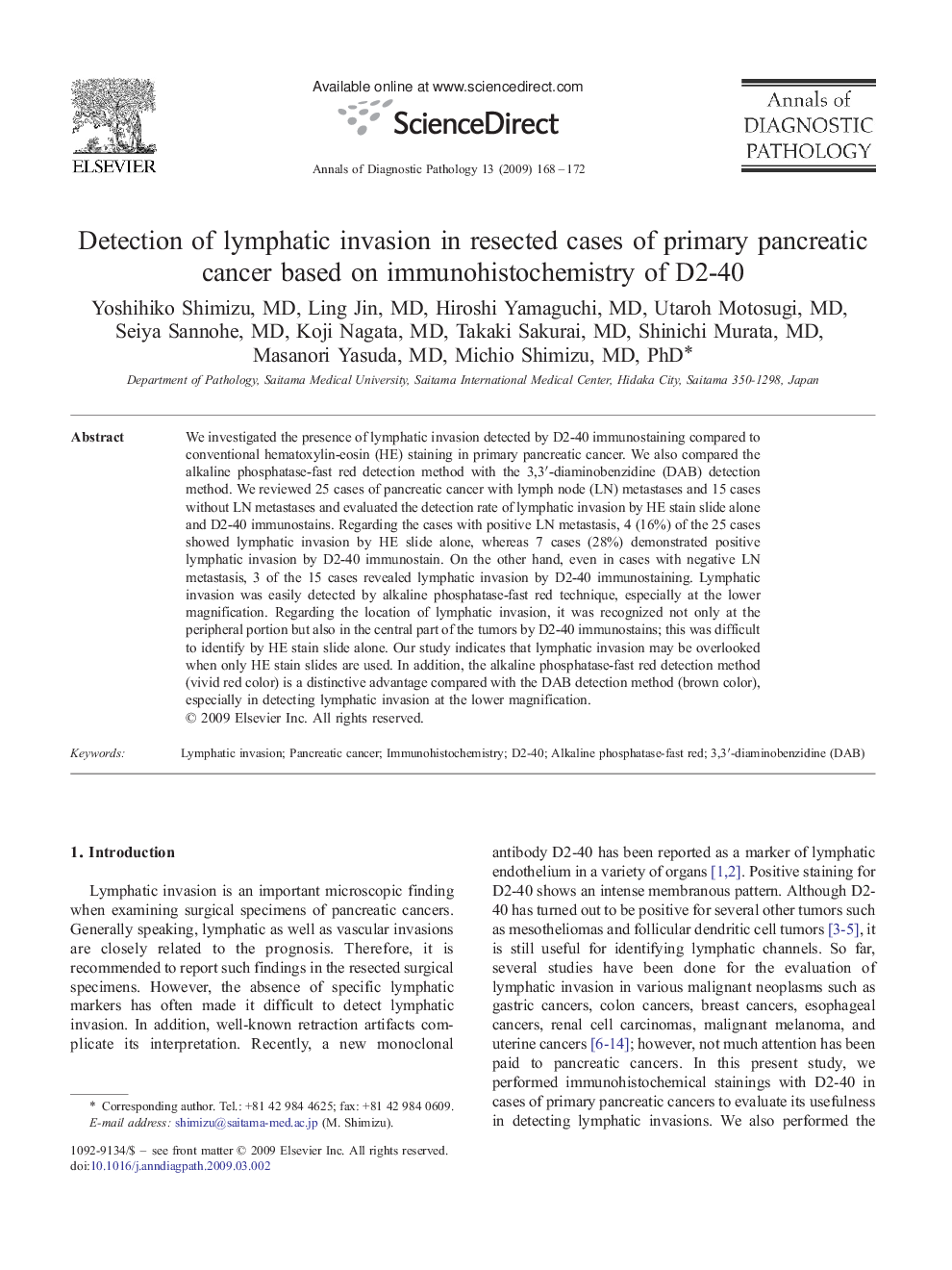| Article ID | Journal | Published Year | Pages | File Type |
|---|---|---|---|---|
| 4130348 | Annals of Diagnostic Pathology | 2009 | 5 Pages |
We investigated the presence of lymphatic invasion detected by D2-40 immunostaining compared to conventional hematoxylin-eosin (HE) staining in primary pancreatic cancer. We also compared the alkaline phosphatase-fast red detection method with the 3,3′-diaminobenzidine (DAB) detection method. We reviewed 25 cases of pancreatic cancer with lymph node (LN) metastases and 15 cases without LN metastases and evaluated the detection rate of lymphatic invasion by HE stain slide alone and D2-40 immunostains. Regarding the cases with positive LN metastasis, 4 (16%) of the 25 cases showed lymphatic invasion by HE slide alone, whereas 7 cases (28%) demonstrated positive lymphatic invasion by D2-40 immunostain. On the other hand, even in cases with negative LN metastasis, 3 of the 15 cases revealed lymphatic invasion by D2-40 immunostaining. Lymphatic invasion was easily detected by alkaline phosphatase-fast red technique, especially at the lower magnification. Regarding the location of lymphatic invasion, it was recognized not only at the peripheral portion but also in the central part of the tumors by D2-40 immunostains; this was difficult to identify by HE stain slide alone. Our study indicates that lymphatic invasion may be overlooked when only HE stain slides are used. In addition, the alkaline phosphatase-fast red detection method (vivid red color) is a distinctive advantage compared with the DAB detection method (brown color), especially in detecting lymphatic invasion at the lower magnification.
